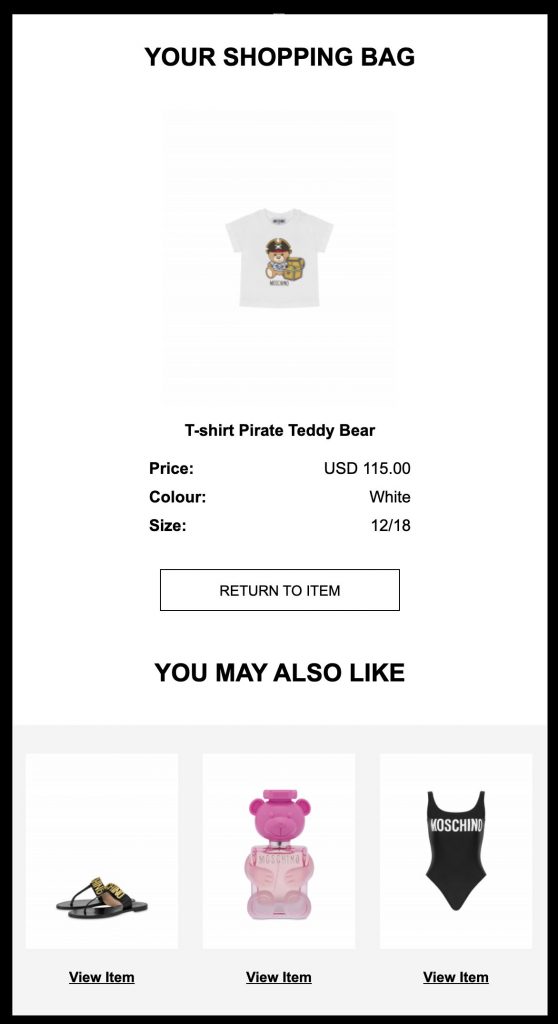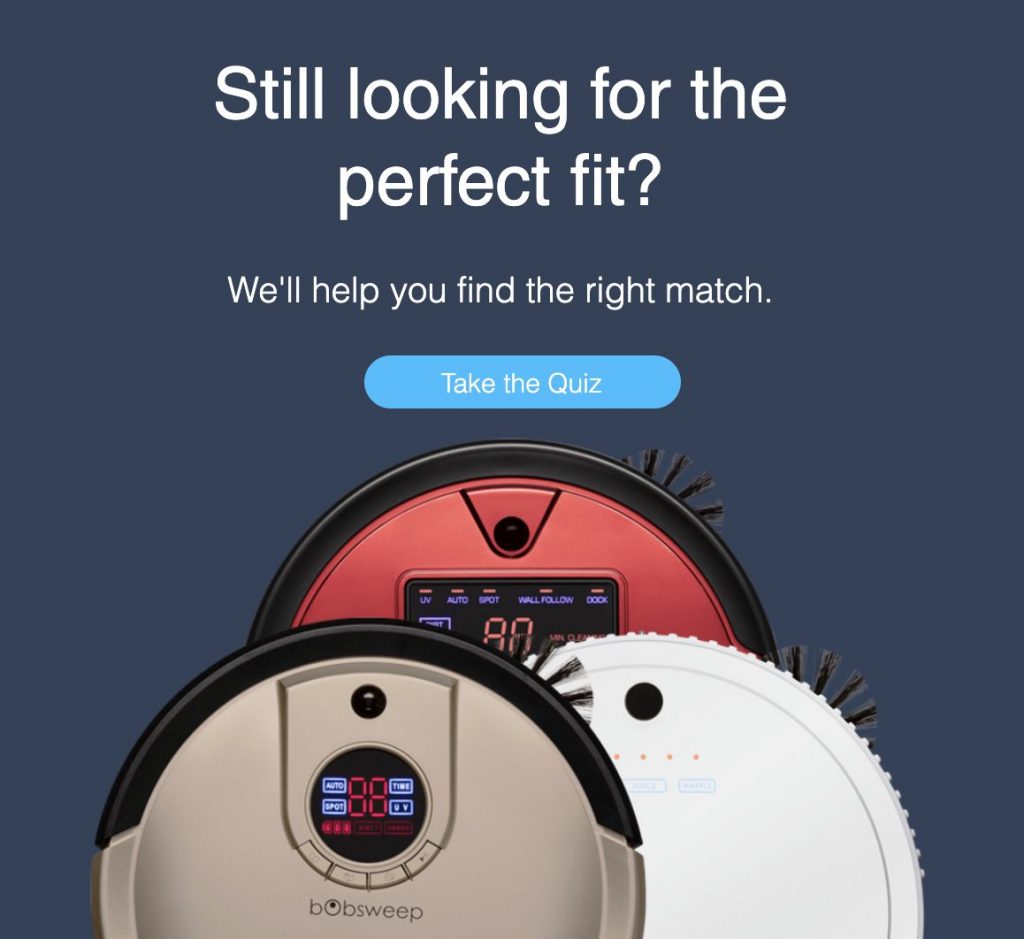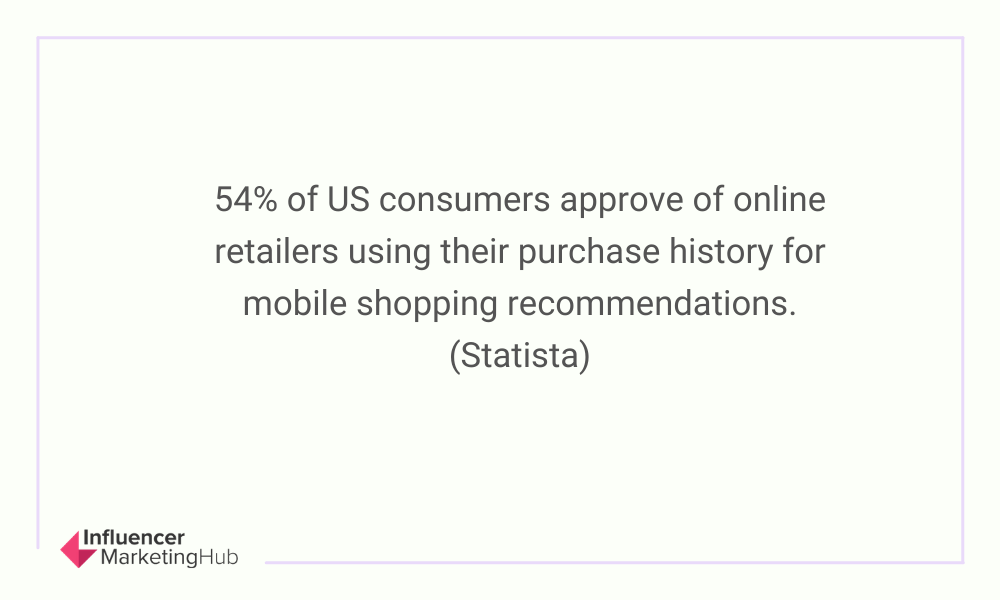Consumers might be flocking to online stores nowadays, but that does not mean that they want any less of an exclusive shopping experience. As a matter of fact, more than 70% of consumers indicated that they will only interact with personalized messaging. Not only that, nearly 80% of consumers indicated that they have picked, recommended, or paid more for a brand that prioritizes personalized services or experiences, according to personalization statistics of Zoominfo.
These numbers paint a very clear picture: personalization is one of the most important eCommerce trends that will shape the future of the industry. It’s no longer a nice-to-have feature, but a necessity. With the help of the following eCommerce personalization examples, you can help to distinguish your brand from its competitors and foster a deeper relationship with your clients.
13 eCommerce Personalization Examples:
- 1. Show recently viewed products
- 2. Personalize product recommendations
- 2. Share DIY ideas
- 3. Create a personalized bestseller list
- 4. Include UGC
- 5. Personalize the home page
- 6. Implement an automated personalized email campaign
- 7. Provide personalized gifts as an option
- 8. Create a personalized gift guide
- 9. Create category-specific promo codes
- 10. Use a style finder
- 11. Request customers’ feedback
- 12. Customize pop-ups based on user behavior
- 13. Go multilingual
- Frequently Asked Questions
What Is eCommerce Personalization?
In a nutshell, eCommerce personalization is when you display individualized content to your website visitors based on statistical data about their population group, personal data, and their previous actions. This content can, for instance, include product recommendations and deals.
For personalization to work, you need to use segmentation and ensure that whatever content you present is relevant and will satisfy the requirements of the users. All in all, it’s a great way to create a sense of exclusivity so that each and every website visitor feels like a valued customer, helping to boost their shopping experience.
13 eCommerce Personalization Examples:
1. Show recently viewed products
Some customers might actually really be interested in specific items, but life happened before they could add it to their cart. When this happens, they will be only too grateful that your store’s site shows them which items they have recently viewed, making it easier for them to continue where they left off. After all, not everyone has the memory of an elephant or toddler who was promised ice cream.
2. Personalize product recommendations
In addition to using a call to action to convince them to reconsider the specific items that they viewed previously, you can also suggest similar products or brands. Personalizing product recommendations is likely the best strategy that you can implement. In fact, according to a study completed by Barilliance, product recommendations make up as much as 31% of eCommerce site revenues.
In short, with this strategy, you will show a visitor similar products based on what they have previously viewed. Another good example of how you can suggest complementary products is by suggesting suitable accessories that will go well with the product that they have bought. This presents an ideal opportunity to implement upselling and/or cross-selling which can help you to improve the average order value. So, if you do not necessarily want to crowd your product pages with recommendations, you can leave these for the checkout page or even after the purchase was made via email.

Source: moschino.com
2. Share DIY ideas
If you are selling something other than clothing, you can build further on your product recommendations by sharing possible DIY projects inspired by their purchase history. Your customers will feel as if their shopping experience is more exclusive, while your average order value (AOV) could increase thanks to customers adding all the other tools and accessories they need to complete the project.
You can either create your own DIY projects or share projects that some of your other customers have completed. The latter approach is a great way to incorporate user-generated content (UGC).
3. Create a personalized bestseller list
To make your bestseller list more unique, you can, for instance, create a bestseller list for the past month, week, or day. For optimal effect, it’s also better to segment your list by location. This way, you will ensure that your recommendations are weather-sensitive and prices are displayed using the monetary unit that your site visitors use.
4. Include UGC
One of the reasons why bestseller lists work so effectively is because consumers are drawn to what their peers are doing or buying. User-generated content (UGC) works on a similar level and can help your visitors to see how your products are used in real life which also helps to create a fear of missing out. If your product range does not lean towards DIY projects, another simple way that you can include it on your actual website is by, for example, including a carousel with images taken by users below the professional product image.
5. Personalize the home page
With the help of cookies, website visitors do not necessarily first have to purchase items before the online store can get to know them better. So, be sure to use the information that you have collected by personalizing the home page the next time that the potential customer visits your website by showing only the product categories that he/she viewed before. Even if it’s only changing the banner to something more relevant, it’s already a good move in the right direction.
6. Implement an automated personalized email campaign
Email marketing remains one of the most powerful channels. At the very least, you should be sending abandoned cart and follow-up emails that you personalize.
When personalizing your emails, it starts with the email subject line. So, be sure to include the recipient’s first name. This way, it feels as if you are addressing them directly, increasing the likelihood of your email getting opened.
Then, after the customer has purchased a product, be sure to send a friendly follow-up message to share personalized product recommendations using his/her previous orders. You can, for example, send them a follow-up email to inform them when items that they have seen are on promotion.
That being said, there is no reason why you should restrict these emails to only product recommendations. In fact, although it sounds counterintuitive, it is bad for business if you constantly encourage customers to buy now.
A creative way that you can mix it up is by sending them valuable information. Perhaps it’s in the form of tips for a recently purchased product? For example, if they have bought a scarf, you can send them 10 ideas for how to wear a scarf. If they bought craft drinks, you can send them recipe ideas. There are numerous types of valuable, product-related content that you can email to your customers which can help you to increase sales.
Ideally, you should also have your subscribers’ birthdays. A discount on their birthday might be the only incentive they need to shop at your store.
7. Provide personalized gifts as an option
Without having to create a separate product page, you can merely add a field where shoppers can add an optional, personal gift note, if they are shopping for someone else’s special occasion. You could also take it one step further and change the packaging of your product when it is a gift, but even if you leave it only at offering customers the option to add a special note for their loved ones, your customers will appreciate the gesture.
8. Create a personalized gift guide
Another way that you can take advantage of gifts is by creating personalized gift guides. So, instead of emailing the same curated list to everyone in your subscriber list, segment your list and use the search history to share handpicked gift ideas.
9. Create category-specific promo codes
Promos and discount coupons remain a firm customer favorite, but these become even more effective when they are for a product category, such as children’s clothing, that a customer regularly browses. You can either display it as a pop-up notification or send it as a follow-up email.
10. Use a style finder
By using a quiz, you can offer your visitors on-site help to make the decision-making process easier. You can then use the results of this quiz and personalize the future product suggestions according to their style. This strategy can be especially powerful if you sell clothing.
Source: bObsweep
11. Request customers’ feedback
Another way to use quizzes is to ask your customers to share their feedback. While it is not an example of immediate gratification at work, it will still communicate to your customers that their opinions matter to your brand. Plus, you can always use the information later to improve your personalization strategy.

Source: bobsweep.com
12. Customize pop-ups based on user behavior
If your website design makes use of pop-up notifications, this is another element that you can personalize. For example, if it’s a first-time visitor, the messaging of your pop-up can encourage them to become a newsletter subscriber or offer a discount on their first purchase. Then, if the visitor has already subscribed, the next pop-up message could be something different like a list of new products that have just arrived in store.
Alternatively, you can also use URL tracking to customize your email campaigns. For example, when visitors browsed a specific product category, you can send them a personalized email to introduce new products added to that category. While data privacy has been in the spotlight in recent years, according to a white paper by smarterHQ about the shopping habits of millennials, 70% of them are willing to let retailers track their browsing and shopping behavior in exchange for a better shopping experience.
13. Go multilingual
Depending on your market, you could translate your website into the main languages that your target audience speaks, especially if your audience comes from different countries. To make it as simple as possible for website visitors, they should be able to switch to their native language in a single click. Not only does this help to improve customer experience, but it can also be great for SEO. Considering that the majority of websites are written in English, a multilingual approach can really help to set yourself apart from others.
Frequently Asked Questions
What is email personalization?
Email personalization refers to when you target email campaigns to specific subscribers using the data and information you have already collected from them. This information could, for example, be their names, products they have bought, their location, or how active they are on your website. It does not have to be complicated and simply adding a subscriber’s name to a subject line is an example of email personalization. In addition to the subject line, other places you can include personalization are the salutation, content, and images.
Why is email personalization important?
Email marketers have reported that a personalized email experience can increase sales, improve customer satisfaction, and boost brand loyalty. Moreover, email personalization is also proven to improve email marketing metrics like ROI and engagement rates as well as improving the sender’s reputation and increasing open rates. This is mainly because consumers do not want to be seen as just part of a big group. Instead, they want to be seen as individuals and treated as such.
Should you use web personalization tools?
Web personalization tools will put your business on the right path and will pay off in the end. So, do not hesitate to invest in the right web personalization tool. Yes, the majority of these tools are expensive, because personalizing your website and other touchpoints is one huge task. It’s not easy, especially if you own a big eCommerce business with thousands of customers.
What are the advantages of using promo codes?
When implemented correctly, promo codes can be a win-win situation. They can offer your customers the added incentive they might need to shop from your eCommerce store which means that you will generate more revenue. In addition to helping you generate more revenue and create happier customers, it can also help you to note the progress of your marketing strategy. You can, for example, use it to see which channels got you the most conversions or traffic.
When is the optimal time to send a marketing email?
Overall, the best day to send an email is on Tuesdays. Emails that are sent on Tuesdays have the best open rates of 18.3%. So, if you send your email on a Tuesday, more people will most likely open your email. Other popular weekdays are Thursdays and Fridays that have the highest click-to-open rates of 14.4%.



